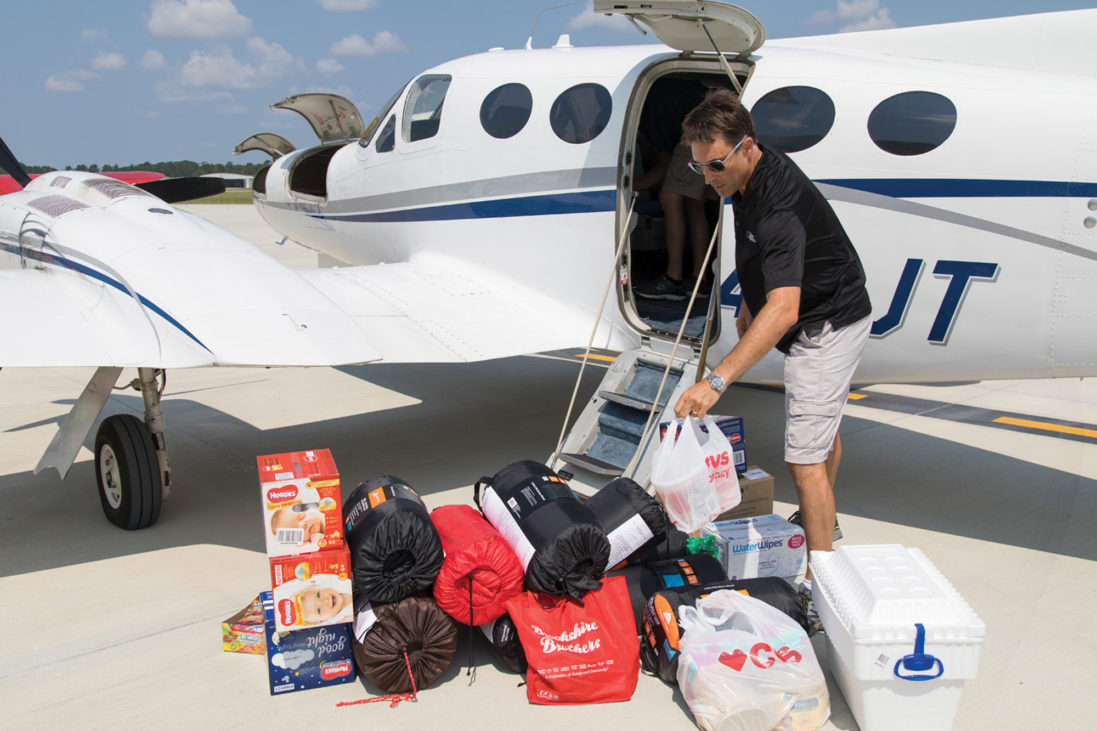
Business aircraft operators flying disaster relief missions will often encounter limited resources and frequently changing circumstances on the ground. With so many additional variables, it’s critical that any relief effort be carefully planned to ensure that it effectively and safely assists those in need. The Patient AirLift Services (PALS) Sky Hope Disaster Relief Program recommends following these best practices when preparing to fly volunteer missions.
Coordinate all flights with a disaster relief charity
Operators flying into a disaster zone must deal with congested airspace and airports, constantly-changing information, and a multitude of organizations and agencies working to determine the best use of resources at any given moment. In these turbulent situations, unexpected arrivals can jeopardize the ability of ground teams to efficiently distribute supplies. Coordinating with a disaster relief charity ensures operators have the most up-to-date information about how best to serve the needs of the affected communities.
Fly with two experienced pilots
Not only is the workload for a disaster relief flight immense, but the abnormal conditions can also make typically routine flight plans far more challenging. In these situations, operators should only rely on type-rated, current pilots, preferably ones with experience flying into areas affected by disaster.
Stay up-to-date on airport and airspace conditions
Check frequently, and again prior to departure, as circumstances on the ground can change rapidly and NOTAMS and TFRs can be implemented at any time. Operators should also call ahead to FBOs and airports before departure as they may have additional information not included in a NOTAM.
Operate aircraft with traffic collision avoidance systems (TCAS)
Flight operations in the affected area are likely to be in high volume, especially with increased helicopter air traffic, while radar and flight following may or may not be available. In this congested airspace, PALS recommends that only aircraft with TCAS equipped should be operated.
Plan for fuel, maintenance difficulties
Fuel is likely to be in short supply or more difficult to procure than usually expected. Operators should plan accordingly to ensure they’re carrying enough fuel to safely return no matter what the situation is like on the ground. The same applies for mechanical problems – resources to help fix flat tires or other aircraft discrepancies will likely not be available, so consider carrying spare parts to address any common mechanical issues that arise.
Prepare for uncertain ground circumstances
The situation on the ground will be constantly changing as natural and human forces affect the disaster area. From security issues to unexpected evacuees, be prepared to deal with a volatile situation that can complicate even the most carefully planned operation.
Recognize when the mission is complete and avoid unnecessary flights
Flights for curiosity’s sake are obviously discouraged, but so too are donated flights after the mission has effectively ended. One of the most important things a community can do after a disaster is resume normal economic operations, and an abundance of donated supplies or flights can disrupt this process.
To learn more about how you can assist in disaster relief efforts, visit the PALS website.
Questions?
For more information, contact NBAA’s Doug Carr at dcarr@nbaa.org.


 International Business Aviation Council Ltd.
International Business Aviation Council Ltd.